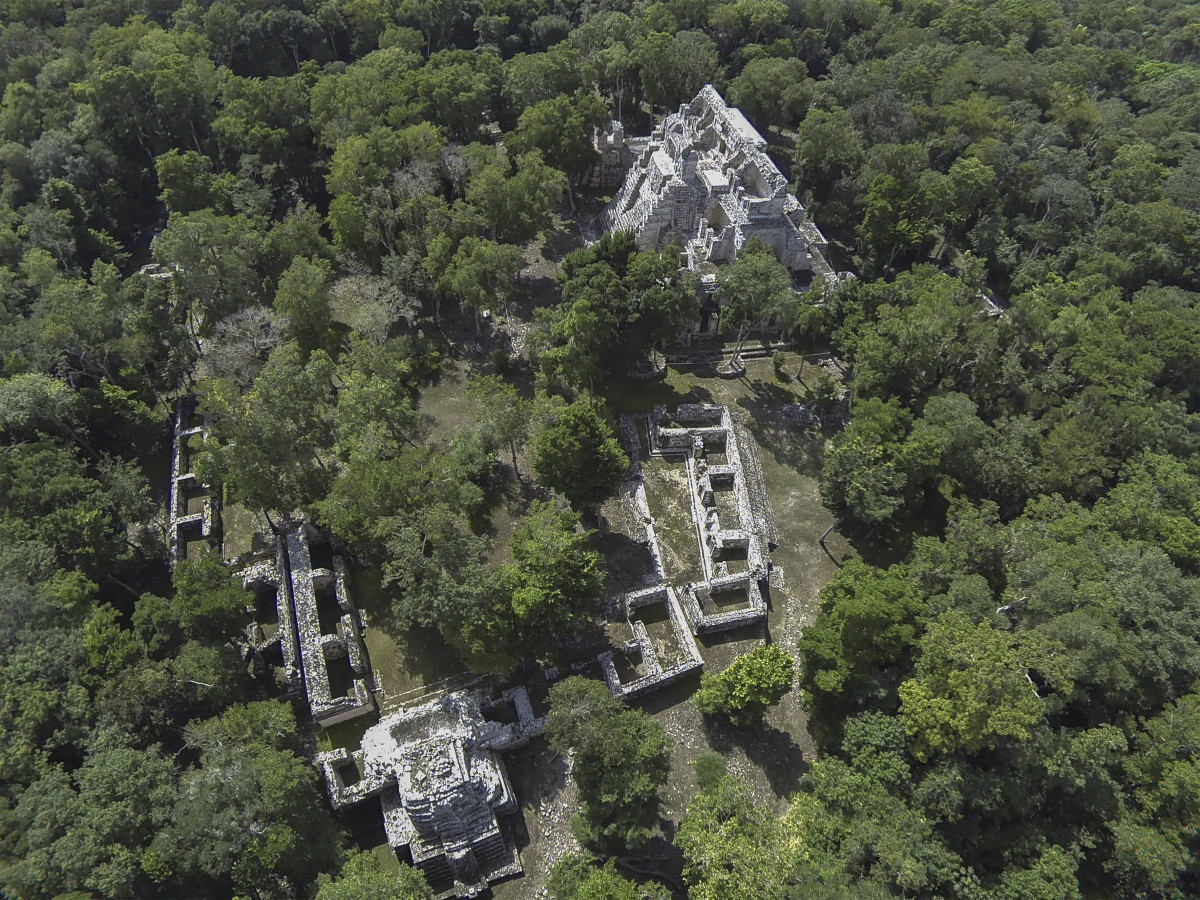This important Chenes region site in the northeast of Campeche was built on top of a hill which was occupied from the outset of the common era. The settlement grew as areas were leveled for construction and alterations were made to the terrain until it became a regional capital on a par with Uxmal, Jaina and Edzna, between 600 and 900 AD.
There are more than 100 monumental constructions, distributed around open or closed squares, but always aligned with the cardinal directions. There are several roofed buildings still standing with false arches or Mayan vaults, and we know that all were once covered inside and out with stucco and painted in several colors, particularly in red.
The Palace is the most significant building, measuring 144 feet long by 82 feet wide and 56 feet high. It has 44 rooms and in addition to its exterior stairways, it has two interior staircases, a rare feature of Mayan architecture. The ancient layers of stucco and paint are missing, but on the whole it retains its original shape.
Some coverings have been removed for conservation from the vaults inside The Palace and from other constructions because they bear representations of the god K'awiil, associated with lightning bolts, but also with the ruling lineages. This settlement can be characterized by the flames or spirals coming out of his headdress, also because one of his legs is always depicted in the form of a snake.
The archeological excavations have aimed to preserve the surrounding vegetation, where we can see hardwood trees such as sapota, mora, kiikche (virola), jabim (Jamaican dogwood), pucte and chintok (black ironwood) used in construction in times past. Among the edible species are annona, breadnut (used these days as fodder), piñuela (the fruit of bromelia pinguin), nance, nopal, several chili species and chaya (tree spinach). There are also a good number of medicinal plants and several melliferous flowers.







